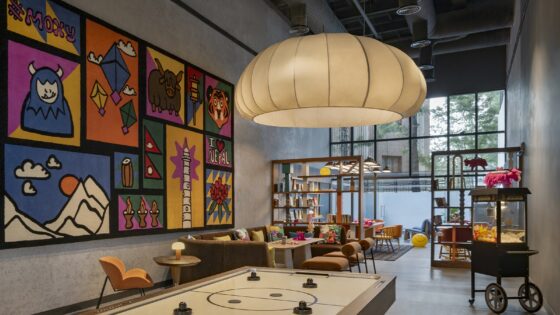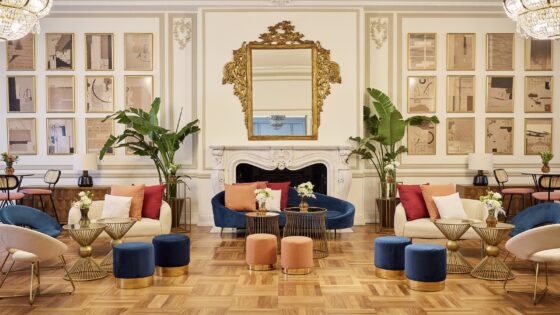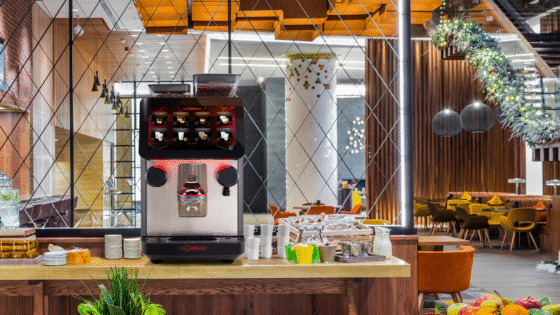Tucked into the hustle and bustle of Manhattan’s historic Flower District, Moxy Chelsea is an urban design jungle. Journalist Hannah Kaplan checks in to check it out…
There is nothing quite like the pulse of New York – its heart beat can be felt from miles away. The thump of excitement and possibilities draw the worldly and well-travelled from near and far in search of great opportunities and the prospect of their dreams becoming reality.
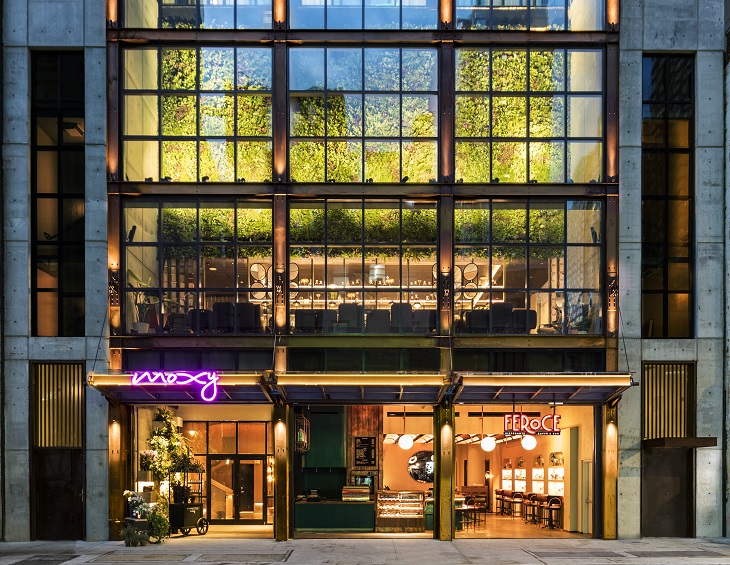
The steady stream of humanity to Manhattan brings with it an expectation of all things beautiful. Manhattan’s Chelsea is not only the entry point for floral beauty, but is now home to the 35-floor oasis that shelters Moxy Chelsea.
“It’s often true that many of New York’s best kept secrets are hidden in pockets sometimes so small one could easily walk right by.”
Part of the Marriott International group and designed by the studio Rockwell Group – and developed by Lightstone – this chic new spot opened its doors three months ago and dares its guests to aspire to all things beautiful in a refreshingly modern environment.
It’s often true that many of New York’s best kept secrets are hidden in pockets sometimes so small one could easily walk right by. However, this is one you won’t want to miss. Tightly nuzzled between dozens of flower shops, guests and locals alike enter through the Putnam & Putnam flower shop designed by Yabu Pushelberg. This charming first visual functions as a sort of a botanical library and homage to the Putnam & Putnam flower shop.
If the astonishing arrangement of freshly cut flowers first draws you through the front door, it’s the palpable smell of Moxy’s signature scent that keeps one floating through the interior space. The rose-like aroma creates a unique ambiance that wafts through the lobby and second floor, drawing guests upwards and on.
The lobby entrance where guests check in is very simple and inviting. There are two floating front desk pods that suspend from the ceiling – a subtle effect that creates more space, while simultaneously drawing your gaze up to the electronic display on the ceiling. The attempt here is to play with one’s senses, to have guests stop, pause and merge into the building’s sensory pulse. The digital ceiling boards were designed with a young millennial perspective in mind, with written messages like “You should Instagram This” flashing across the screen. You can even hashtag the #MoxyChelsea and have your image pop up in the lobby area.
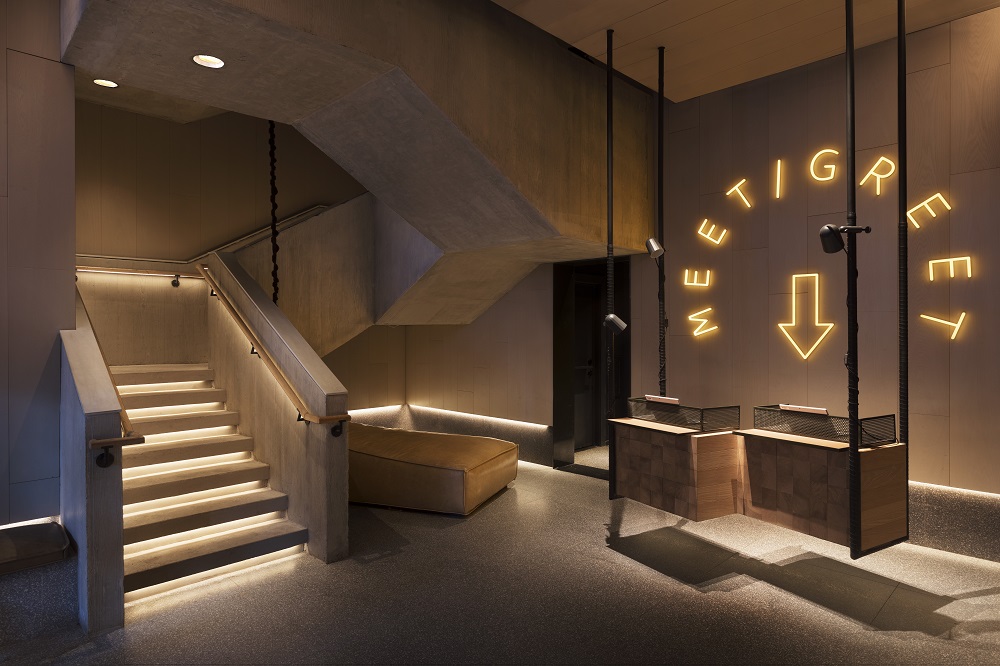
Image caption/credit: Minimalist lobby area at the hotel | Moxy Hotels/Marriott International/Michael Kleinberg
The architectural design of the building is very much influenced by its surrounding flower district, but equally important are the playful touches of modernism and hints of Italian romance scattered throughout. The theme trickles out as far as the street-styled Italian Feroce Café and the Feroce Restaurant – both are an extension of the hotel and serve as a sort of love letter to Italy – an important tribute from Italian chef Francesco Panella.
This ode to Italy continues as guests migrate from the lobby area up a set of charming concrete stairs to the second-floor lounge. The floor’s dimly lit ambiance is matched by the sparse yet modern décor and creates a space that begs to be explored.
There are small spots for the solo traveler who need a space to work and cozy corners for groups who need a small couch and a table to place cocktails between whispered conversations. On the wall above, guests can gaze up at the incredible 20-foot-high life-like green wall, reinforcing the idea of an urban jungle – bringing the outside in.
Towards the back there are even private spaces available to rent for events, dinners, or just to lounge in. The idea is to bring guests out of their rooms – socialise, eat, have a drink – and to make sure the multitasking lifestyle is a communal and immersive experience for all.
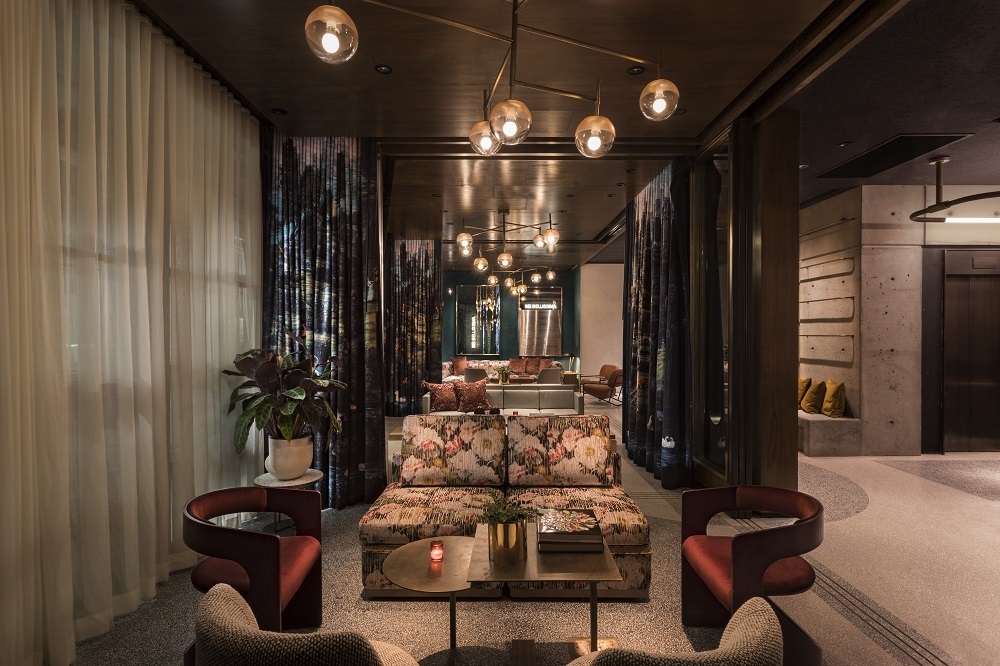
Image credit: Moxy Hotels/Marriott International/Michael Kleinberg
For the guests who want to continue their socialising, The Fleur Room is the next destination. Located on the 35th floor, the intimate rooftop bar is open to hotel guests and locals alike, but for the latter you’ll need to make sure your name is on the list. The alluring glow of light and color birth a heightened space of intimacy and mystery. The sofa material is embedded with a floral design and the bronzed furniture surfaces are smooth and polished. Sink back into the comfortable couches and let your eyes settle on an incredible view of one of New York’s most recognisable charms – the Empire State building.

Image caption/credit: The Fleur Room | Moxy Hotels/ Marriott International/Michael Kleinberg
As one drifts through the lush lounge space, a set of elevator doors appears midway through. Each elevator bank was strategically positioned to run through the center of the building, giving all bedrooms access to large windows and a beautiful view of the Manhattan skyline.
The guestrooms are approximately 200-square-feet but equipped with floor to ceiling length windows that compensate for a new trend in hotel rooms – small and efficient living spaces. And for what it may lack in size, it makes up for in appearance. The urban sleekness of the room supports the space efficiency of modern travel. Clothes can be placed on the hooks that run alongside the wall, which conveniently are located next to collapsible furniture (e.g. a small table and chair) hung vertically on the wall to use at one’s leisure – a contemporary take on “glamping,” if you will.
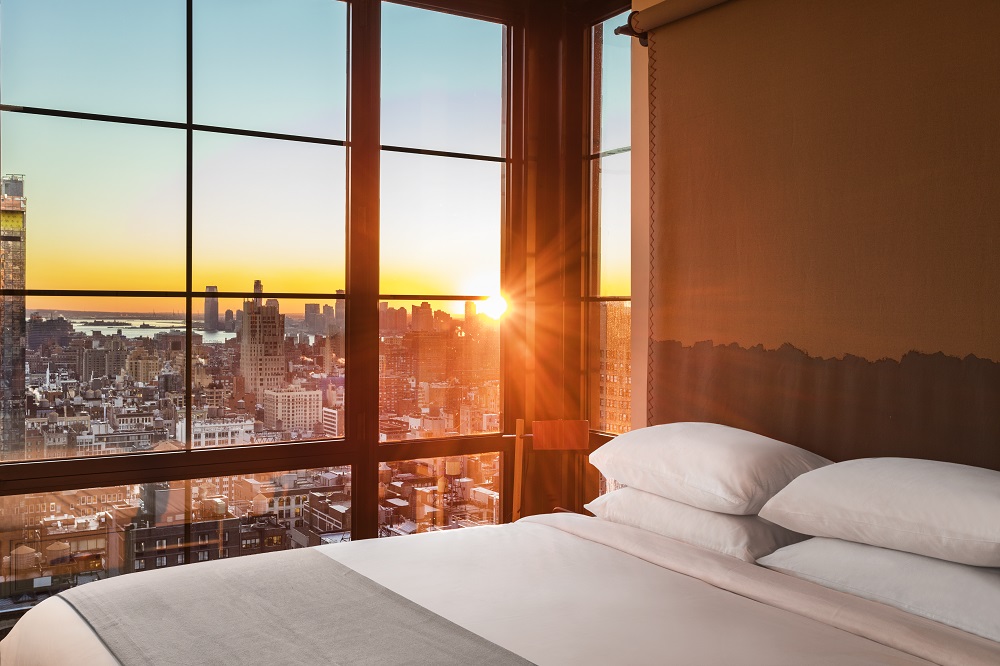
Image credit: Moxy Hotels/ Marriott International/Michael Kleinberg
The compact tiled bathrooms offer quirky sets of phrases like “GET WILD,” giving the room a playful feel and reminding visitors that the pulse of New York City awaits them outside. And to remind guests of the ever-present and rejuvenating floral theme, each sink knob resembles a steel garden hose frame.
The bold and modern design of the Moxy has created a space that endeavors to reform the way we perceive the hospitality industry as a whole — in this case, through the small and efficient styled rooms offset by the thematic design that encourages guests to get out of their rooms. It is also the romantic sense of Italian Café life and the simple love of flowers that Putman and Putnam won’t let us forget; The Moxy Chelsea reminds us that beauty and efficiency can co-exist and serve as portal for everything in New York.
Main image credit: Moxy Hotels/Marriott International/Michael Kleinberg

